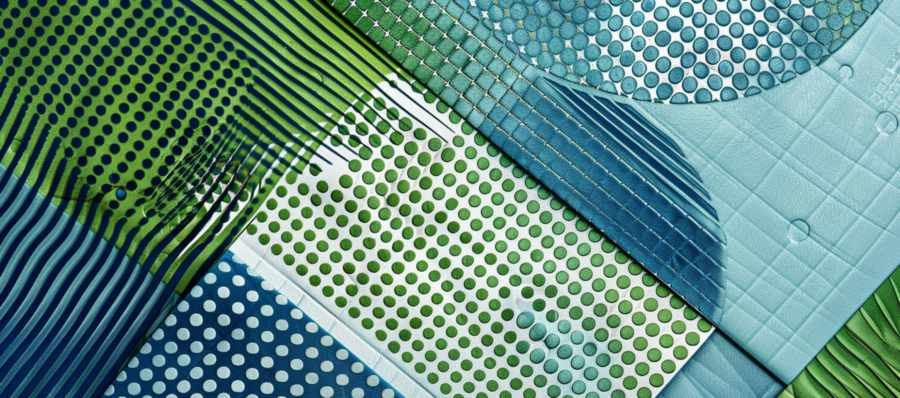The Peculiar World of Leatherworking in Arts and Crafts
 Picture this: You're sitting at your crafting table, ready to create some leather-bound masterpiece. You've got your tools, your leather, and your creative juices are absolutely flowing. But then, you pause. What exactly is this strange world of leatherworking, and how on earth do you succeed in it? Fear not, my crafty comrades! In this thrilling escapade, we'll delve into the enigmatic realm of leatherwork, arming you with valuable insights and practical advice to help you on your quest to conquer the arts and crafts niche.
Picture this: You're sitting at your crafting table, ready to create some leather-bound masterpiece. You've got your tools, your leather, and your creative juices are absolutely flowing. But then, you pause. What exactly is this strange world of leatherworking, and how on earth do you succeed in it? Fear not, my crafty comrades! In this thrilling escapade, we'll delve into the enigmatic realm of leatherwork, arming you with valuable insights and practical advice to help you on your quest to conquer the arts and crafts niche.
The Lore of Leatherworking: A Brief and Moderately Interesting HistoryBefore we can truly appreciate the complexities of leatherwork, we must first take a journey back in time (way back, to the days before the internet and avocado toast). Leather has been a crucial material for human survival since the dawn of time, with evidence of its use dating back to 5000 BCE. Early humans would fashion crude but functional clothing, footwear, and shelter out of leather, proving that even our primitive ancestors had a knack for arts and crafts (although their creations likely lacked the pizazz of your average Pinterest board).
Fast forward to the Roman Empire, where leatherworking had evolved into a highly esteemed art form. Artisans crafted exquisite sandals, armor, and even art from this versatile material. And let's not forget the Middle Ages, when monks painstakingly hand-stitched illuminated manuscripts with leather covers, proving once and for all that even the most devout among us can appreciate a well-crafted hide.
Tools of the Trade: A Leatherworker's ArsenalNow that we've gained a proper appreciation for the history of leatherworking, it's time to familiarize ourselves with the tools that will propel us towards artistic domination. Behold, the essentials of a leatherworker's toolkit:
- Cutting tools: A sharp knife or pair of scissors is essential for cutting your leather into the desired shape. Remember, much like a sculptor and their marble, you can't make art without first breaking a few hides.
- Stitching tools: You'll need a sturdy needle and some strong thread to bring your leather pieces together. Choose a thread color that complements your leather for a visually appealing final product.
- Stamping tools: These are the implements you'll use to make your mark on the world (or at least on your leather). From intricate patterns to personalized initials, stamping tools allow you to truly customize your work.
- Burnishing tools: Burnishers help you add a polished, professional finish to the edges of your leather. Much like a well-tailored suit, it's all about those clean lines and smooth edges, darling.
While this is by no means an exhaustive list, these essential tools will set you on the path to leatherworking greatness. As you gain experience and confidence, you can expand your toolkit with more specialized implements, much like a Pokémon trainer collecting badges on their journey to becoming a master.
Leatherworking Techniques: Not Your Grandma's Arts and CraftsWith our newfound understanding of leatherworking's history and necessary tools, it's time to explore the various techniques that will elevate your craft from a mere hobby to a true art form:
- Saddle stitching: This technique involves sewing your leather pieces together with a single, continuous thread. It's a time-consuming process, but the result is a strong and durable seam that's worthy of admiration.
- Embossing: If you've ever wanted to make a lasting impression, embossing is the technique for you. By pressing a heated stamp onto damp leather, you can create raised patterns and designs that add depth and texture to your work.
- Edge painting: A little color goes a long way in making your leatherwork stand out. Edge painting involves applying a thin layer of paint to the edges of your leather, creating a smooth, refined finish that would make even the finest art galleries swoon.
- Braiding: Who says braids are only for hair? By weaving strips of leather together, you can create intricate patterns and designs that add a touch of elegance to your work.
As you practice these techniques and develop your own unique style, you'll find that the world of leatherworking offers endless creative possibilities. So go forth and conquer, intrepid artist! May your leatherwork be the envy of Pinterest boards and craft fairs alike.
|
|




 Picture this: You're sitting at your crafting table, ready to create some leather-bound masterpiece. You've got your tools, your leather, and your creative juices are absolutely flowing. But then, you pause. What exactly is this strange world of leatherworking, and how on earth do you succeed in it? Fear not, my crafty comrades! In this thrilling escapade, we'll delve into the enigmatic realm of leatherwork, arming you with valuable insights and practical advice to help you on your quest to conquer the arts and crafts niche.
Picture this: You're sitting at your crafting table, ready to create some leather-bound masterpiece. You've got your tools, your leather, and your creative juices are absolutely flowing. But then, you pause. What exactly is this strange world of leatherworking, and how on earth do you succeed in it? Fear not, my crafty comrades! In this thrilling escapade, we'll delve into the enigmatic realm of leatherwork, arming you with valuable insights and practical advice to help you on your quest to conquer the arts and crafts niche.